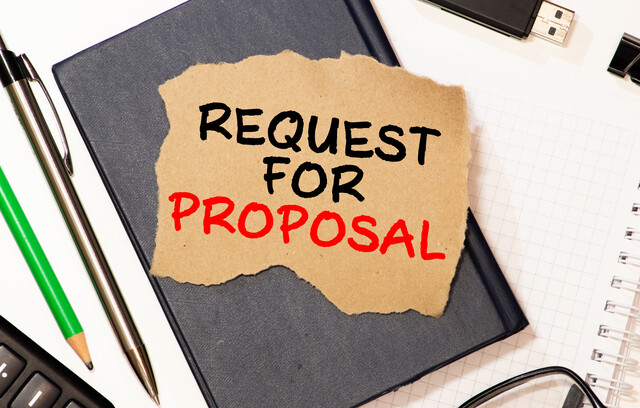Whenever a salesperson gets a job with a new company, that salesperson will go through training to learn how to sell the products that company offers. The new salesperson will most likely be given a script to use. They will also be given product training. In short, the company will teach that salesperson how to successfully sell to their customers.
As a copywriter, you won't get that luxury with clients. You will not be told what to write. You will not be given extensive training on the product. In addition, you won't get product training most of the time. The client will expect you to learn about their company, their product, and their competitor, then create an idea for copy that will effectively make sales. You may be shown past advertisements, but you will be expected to create something new and fresh.
That said, we can't teach you to write for certain markets or to write for certain types of companies and products. What we can do, however, is teach you to write like the copywriter you are becoming. We can show you tips and techniques that will improve the effectiveness of your copy, and help make you more successful. And we can also give you the basic knowledge you need to sell anything with your words. Starting with this article.
Be Unique, Don't Borrow Interest
In the world of advertising, borrowed interest is when you borrow the consumer's interest in something outside the company. For example, you may relate your ad to a local, national, or international event. Perhaps it's the Olympics. It may also be borrowing the consumer's interest in another brand. Think of the "Got Milk" campaign. It did well for dairy farmers, so you might think it will do well for you and your campaign. Another example is using kids and baby animals in your ad campaign. You use them because they're cute and attract attention. However, it doesn't mean they will make the ad effective. In fact, usually it does just the opposite.
As a copywriter, you always want to come up with unique ways to draw attention to the copy you write.
That's not to say you can't borrow interest, but the general rule is if you can slide any product or any brand into the ad, it's a bad example of borrowed interest. You always need to make sure that anything you use in your ad ties into the product or service you're selling.
Here's an example.
Let's say you're selling cell phones. You create two ads. One has a grumpy looking cat holding a cell phone with the headline, "Our Speeds Are So Fast, They Make Grumpy Cat Happy!"
If you spend any time on social media, then you know Grumpy Cat. First of all, Grumpy Cat is trademarked. That's a huge risk you take when you borrow slogans, characters, etc. Secondly, you could insert any product or brand into the ad. The cat does not tie into what you're trying to sell; therefore, it may attract attention, but probably not the volume of sales you want.
Now, here's the second ad. It has a picture of an speedometer, and the speedometer shows you're going as fast as you can. The headline is "Enjoy Breakneck Speeds with Unlimited Data". The speedometer ties into the message in the advertisement. You could not insert any other product into the ad, because it's clearly tied into a cell phone company. This is the ad that's going to be more effective because it ties into what you're trying to sell.
As a new copywriter, you should avoid using borrowed interest. You should focus on being original and unique. You should focus on crafting messages to sell products and services instead of playing off of some other company's idea or trying to grab attention by using things familiar to your consumer. Later, when you get some experience, you may be able to successfully use borrowed interest. But by then, you'll be an effective copywriter in your own right and will be able to produce ideas that will be effective for whatever product you're selling – without borrowing a thing.
Use Your Swipe File to Learn to Write Copy
Let's take a minute to distinguish the swipe file from borrowed interest. At first glance, they may seem like similar beasts. You can look at advertisements in your swipe file and borrow the ideas that worked for them, right?
Wrong.
As a beginner, a swipe file can help you get the feel of how advertisements are crafted. They can help you get the feel for writing advertising copy. Writing copy is a craft to be mastered, and a swipe file can help you on your way by showing you copy done right (in most cases).
You should always work to grow your swipe file by opting in for advertisements from companies from different industries. The swipe files can be used to help familiarize yourself with industry jargon. It can also help you learn your audience and the type of advertising copy that is more likely to persuade them to respond. In other words, your swipe file can teach you how to "talk" to your audience.
Take a look at what we mean. Here's an ad for a weight loss product.
Let's say this ad was on a postcard you received in the mail. The language is geared to those who want to lose weight. These types of consumers want to lose weight, they want to lose it fast, and they want to know the secret to doing it, because nothing they've tried has worked (or they wouldn't still be looking). This might be an effective advertisement for a weight loss product, but it wouldn't work for, say, a new computer.
See for yourself...
You can see how the language used in a weight loss ad isn't effective for another product. Having a large swipe file will teach you the language that's most effective for certain products.
You can also learn how to structure your copy from your swipe file. You can see how other companies lay out their offers and use that to build your own copy.
To do this, sort out the order of the different elements in the copy.
Locate the places in the copy where the advertisement:
|
|
|
|
|
|
|
|
|
You can create different formats – or the elements in a different order – and use it as a template when writing copy.
Let's look at some of the different elements in a few ads so that they will be easier for you to pick out.
Take a look at the example ad below.
Not all elements are pictured in this ad, because it was displayed in a member's only magazine. The magazine contained an order form for the various advertised products. However, you can see some of the elements labeled above.
Let's look at some elements in other advertisements.
Take a look at this excerpt from a direct sales letter. The main objection readers had was that they tried similar things before, only to realize they didn't work. This excerpt starts to overcome their objections:
Below is an example of a risk-reversal in an ad:
After the risk-reversal, the letter closes the sale:
Use the Kitchen Table Method to Talk to Your Readers
Whenever you write advertising copy, you want to talk directly to your readers. Treat them like they're sitting across the table from you, and you're telling them about the product you want them to buy. Write to the consumer.
If you have to, visualize someone who would be a likely consumer for the product you're selling, and write to that person. It grabs the consumer's attention and makes them feel like you're talking directly to them. You're understanding their self-interest in your product and educating them on why your product is the best one for them. It helps to make the copy you write more interesting and relatable.
Look at the following examples.
In this example, the ad is talking about the product, but it's NOT talking to the reader.
Let's take a look at copy that talks to the reader. Can you see how the second ad speaks directly to the reader? You are telling them about the benefits as if you were showing them the phone while sitting with them at your kitchen table.
Be friendly and conversational.
The copy should feel natural to the reader. It should feel as if you are talking directly to them. In other words, it should never feel stiff or uptight.
To make your copy friendly and conversational:
-
Use the personal pronouns I, you, we, us, me, our, and they.
-
Use colloquial expressions, such as OK, or sure-thing, and – if the product and tone of the ad permits it – you can even use words like hey, yay, and words like that.
-
Use contractions. This isn't technical writing, and contractions make your writing seem less stiff.
And if you ever have to choose between proper grammar and writing naturally, choose to write naturally. Remember, you're writing to sell a product. You're not writing a self-help book.
Listed below are some other things you can do to give your copy a friendly, conversational feel and tone:
-
End sentences with prepositions. Write as people talk. Don't write as your English teacher writes.
-
Start sentences with conjunctions. And nobody will notice that you did, because it's conversational and draws readers deeper into the copy.
-
Use one sentence paragraphs. It changes the pace and lightens the mood. Not to mention, if you're writing a long sales letter, it catches the reader's eye and pulls them back into the copy.
-
Use attention-grabbing techniques such as different fonts, font sizes, and formatting. Don't be afraid to boldface or underline a word or sentence that you want to make sure the reader sees. If a word, sentence, or phrase is important to the copy, make it stand out.
It's all about grabbing attention, keeping attention, and persuading the reader to buy. You can also use fake handwriting in parts of the copy, add notes to the margin, highlight text, use callouts, and use arrows to point to important aspects of the copy. On a webpage, you might want to use an arrow to point to the Buy button.
It's your job as the copywriter to grab the reader's attention, then keep their attention. You can use all the bells and whistles you need to accomplish this. Just make sure you're bells and whistles all direct their attention to where it needs to be. On the copy!
-
Use bullet points. Bullet points are great to list some of the secondary benefits the product offers. However, writer beware. The bullet points must be engaging and compelling. Be strong about the problem your consumer faces when writing bullet points. Be vague about the solution.
Your readers are reading your copy because of their own self-interest. They are looking for a solution to a problem they face. If you're writing copy for a clothing sale, their problem might be that they need new clothes at a discounted price. If you're selling a cell phone, their problem might be they want the best phone for their money. You get the idea. Your job is to sell the solution.
Organize Your Selling Points
Every product that you sell has selling points. Selling points are benefits of the product that make it appealing to consumers. Your main selling point should be in the headline, then expanded upon in the first few lines or paragraphs of the copy, depending on the length of the copy. From there, you will list or write about the other selling points in the order of their importance.
Here's a good rule of thumb for selling points. Make a promise in your headline using the main selling point. "Lose 5 Pounds in Ten Days!" Then, show them how the product will fulfill that promise. Start with the most important benefits, then work your way down. Finally, tell them how to buy the product and let them know why the price is low compared to the value.
Use Short Paragraphs and Sections
In high school English class, most of us learned that a paragraph should consist of at least five sentences. Your teacher may have suggested one less or a few more. This rule means that some paragraphs can get long-winded and hard to read. That's exactly what happens when you try to write paragraphs when you write copy. Keep paragraphs limited to three or four lines at most. If your copy has different sections, keep the sections as short as possible. Use subheadlines or numbers to divide up the sections.
You can use different sections to break up selling points. You can also use them to transition from selling points to a different element of the copy, such as risk-reversal.
The example below is a sales letter written for a work-from-home opportunity.
As you can see, there are two sections. The sections are divided using subheadlines. Not only do the subheadlines divide the sections, they also give you chances to grab the reader's attention and get them to read if they are just skimming through the copy.
Use Simple Words
Part of writing clearly is using words that all of your readers can understand. Don't try to impress people with your vocabulary or try to sound intelligent. Those things don't lend to effective copy. They detract from it. Instead, use words that everyone can understand.
Below is a list of big words you might be tempted to use, as well as suggested substitutions. The substitutions follow the equal sign (=).
|
assist = help |
automobile = car |
|
container = bottle, jar, package |
database = information |
|
diminutive = small |
eliminate = get rid of |
|
employ = use |
facilitate = help |
|
facility = building, factory, warehouse |
finalize = finish, complete, conclude |
|
garment = suit, shirt, dress |
indicate = tell, say, show |
|
obtain = get |
operate = run, use |
|
optimum = best |
parameters = factors |
|
prioritize = set priorities, rank |
procure = get |
|
perspiration = sweat |
purchase = buy |
|
substantiate = prove |
select = pick |
|
superior = best |
utilize = use |
|
terminate = end, finish |
visage = face |
Avoid Technical Jargon
Computer experts. Wall Street executives. Engineers. These are all people who use technical jargon that the majority of us do not understand. We might not know what a CPU is, or what sideways consolidation means, or why it's important if a car has a certain torque. Yet, these are all people who may hire you to write advertisements for them and will give you all this technical jargon that they believe are selling points to the product or service they're offering.
As a copywriter, you want to avoid the technical jargon unless at least 95% of your targeted audience will understand what it means. Your job will be to take their technical jargon and convert it into easy-to-understand selling points.
When your client's industry uses a lot of technical jargon, you will have to decipher it before writing copy in order to create effective advertisements. You'll have to present the copy in a way that the vast majority of readers understand the benefits of the product, as well as write it persuasively so the product sells.
How Long Does Copy Have to Be to Sell?
One of the most frequently asked questions by new copywriters is this: How long does copy have to be in order to sell a product?
To that question, there are many answers. The official correct answer is: As long as it needs to be to sell the product.
You should always keep the copy concise and get straight to the point. Be specific too. Don't use 100 words to say what you could in 20. Don't be vague by using "clever" or "cute" phrases. Use only words that are going to move the copy along, that focus on the selling points, and move the reader closer to the sale.
Avoid being redundant and using run-on sentences.
Don't use the passive voice.
Edit out unnecessary adjectives, words, phrases and sentences.
You will always write copy, then edit it again and again. Edit it so that your copy is as concise as possible. You want to sell the product using the least amount of words possible – and only using needed words – because that is what makes good copy powerful and effective.
You can try imagining your copy as a conveyor belt. You're at one end. Your customer is at the other. You want to feed them words that will keep their interest in the product and persuade them to buy. If you use too many fluff words – or words and sentences that aren't needed – they're going to get a belly full of you and walk away. Only use words that keep them devouring what you put on that belt.
Just remember to identify your selling points and list them in order of importance. It will go a long way to helping you write clear and concise copy.
Never Use Sexist Language
The one thing you never want to do is offend or anger your reader. Using sexist language is one way that you can do that. You should always avoid writing to a specific gender unless the product was designed for one gender. You also want to avoid phrases that seem to address one gender.
For example, you may be tempted to open a sentence with, "Hey guys!" It's conversational, and the best ad copy is conversational. However, it refers to the male gender. You could offend the females in your audience.
Below is a list of gender specific terms, as well as the terms you should use instead. The terms you should use follow the equal sign (=).
|
anchorman = anchor |
advertising man = advertising professional |
|
chairman = chairperson |
cleaning woman = domestic |
|
Englishmen = the English |
fireman = firefighter |
|
foreman = supervisor |
a man who = someone who |
|
man the exhibit = run the exhibit |
man of letters = writer |
|
mankind = humanity |
manpower = personnel, staff |
|
man-made = artificial, manufactured |
man-hours = work hours |
|
Mrs., Miss = Ms. |
newsman, newspaper man = reporter |
|
postman = mail carrier |
policeman = police officer |
|
salesman = salesperson |
self-made man = self-made person |
|
stewardess = flight attendant |
weatherman = meteorologist |
|
workman = worker |
























